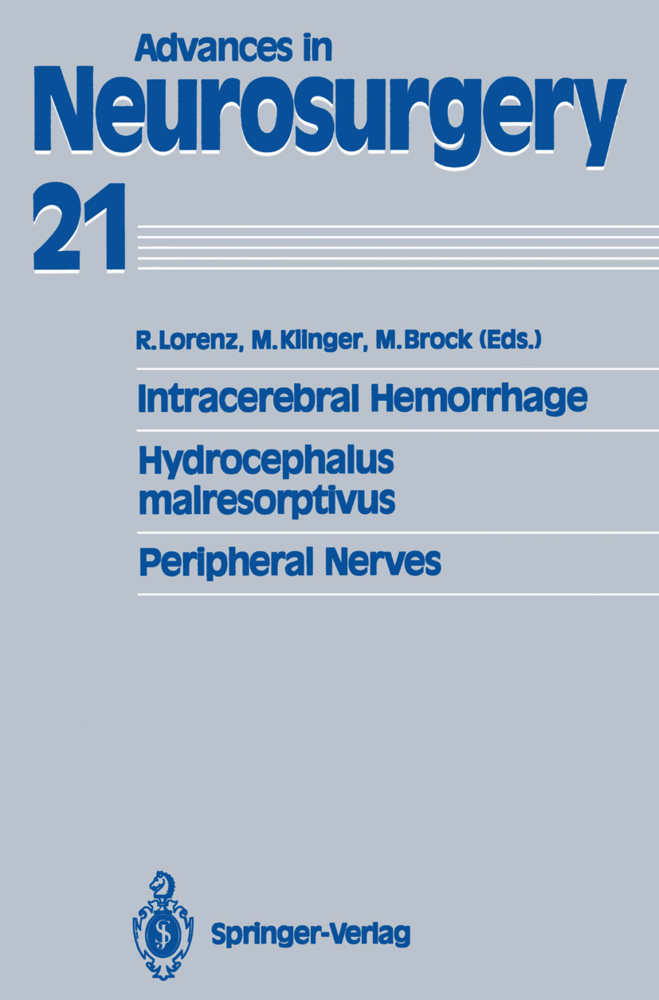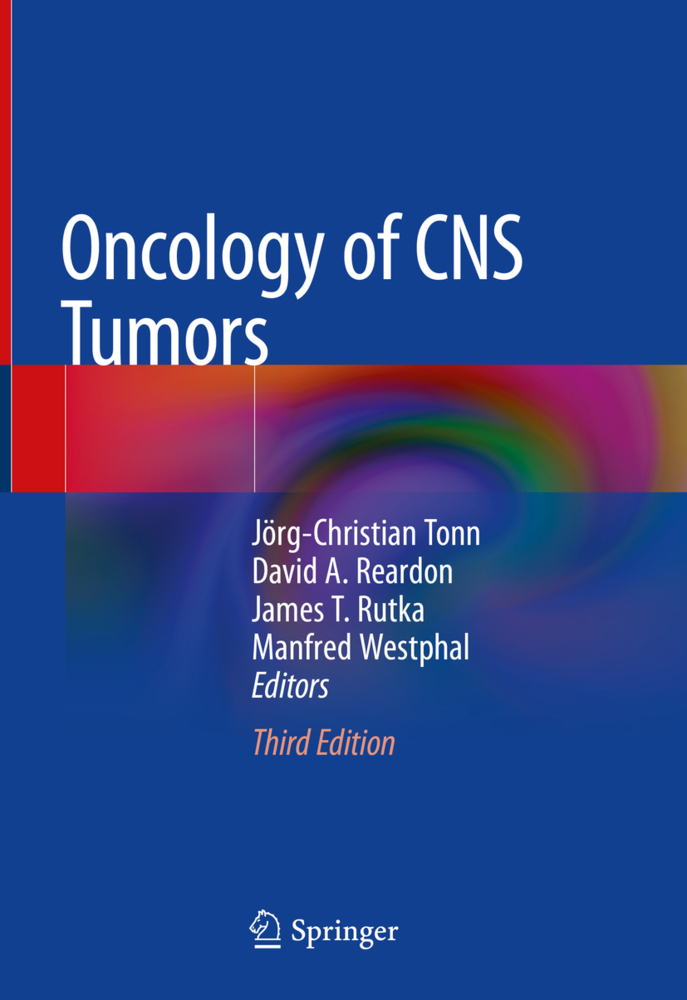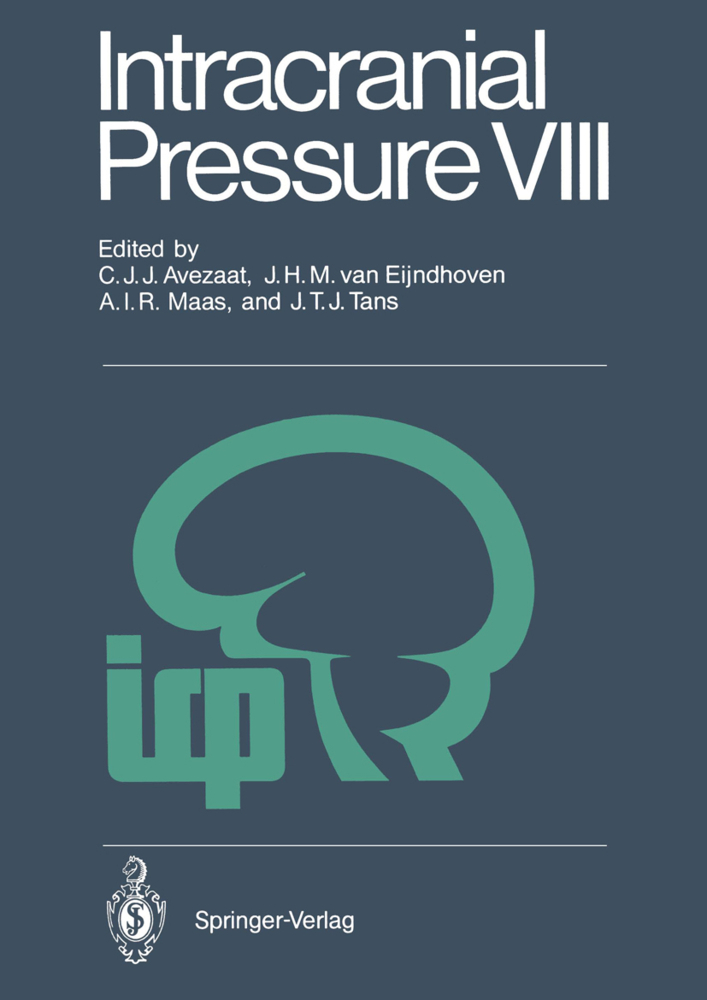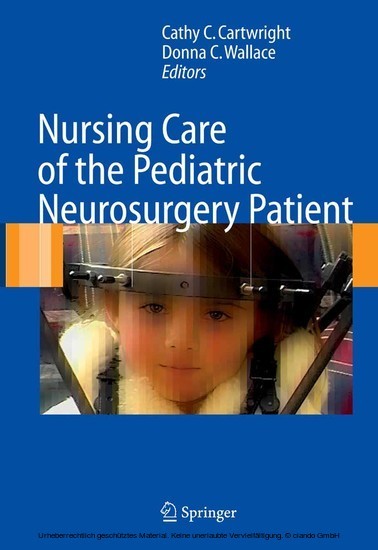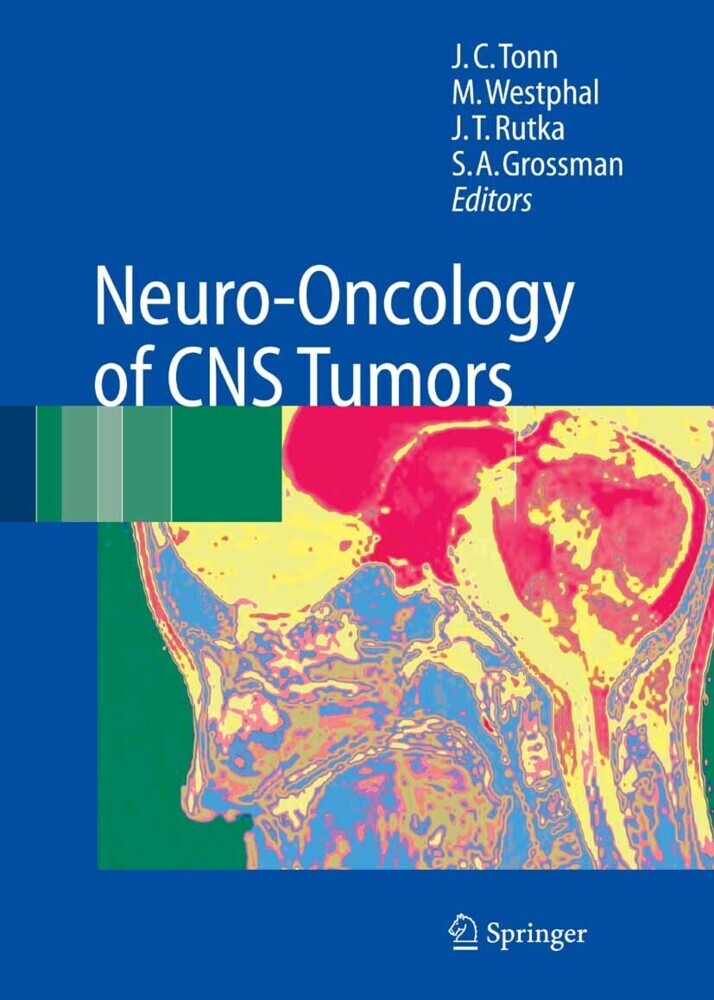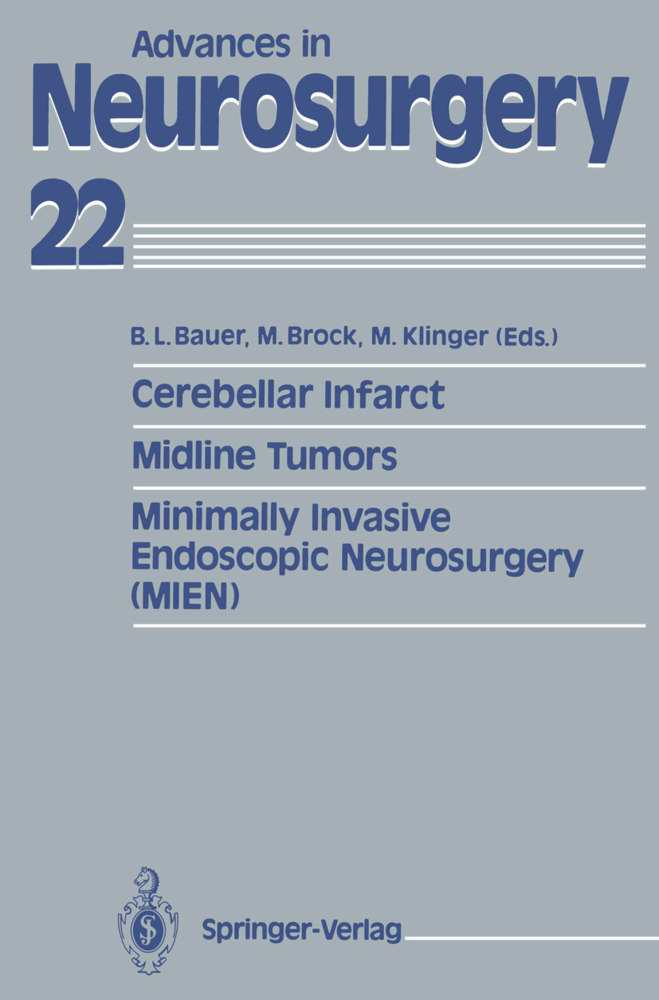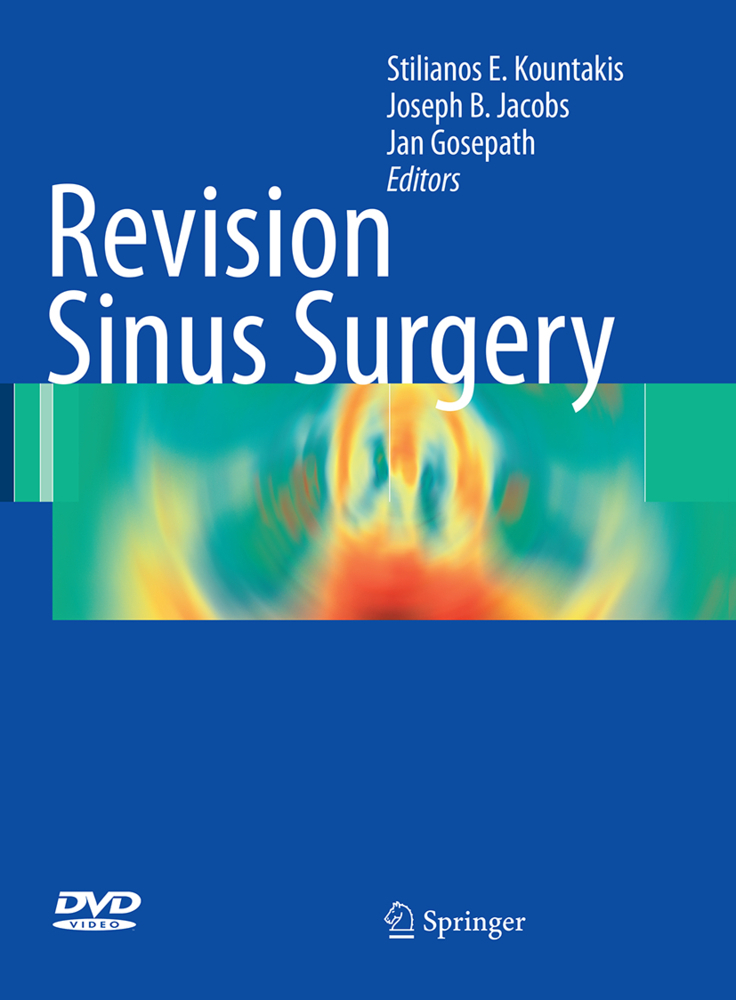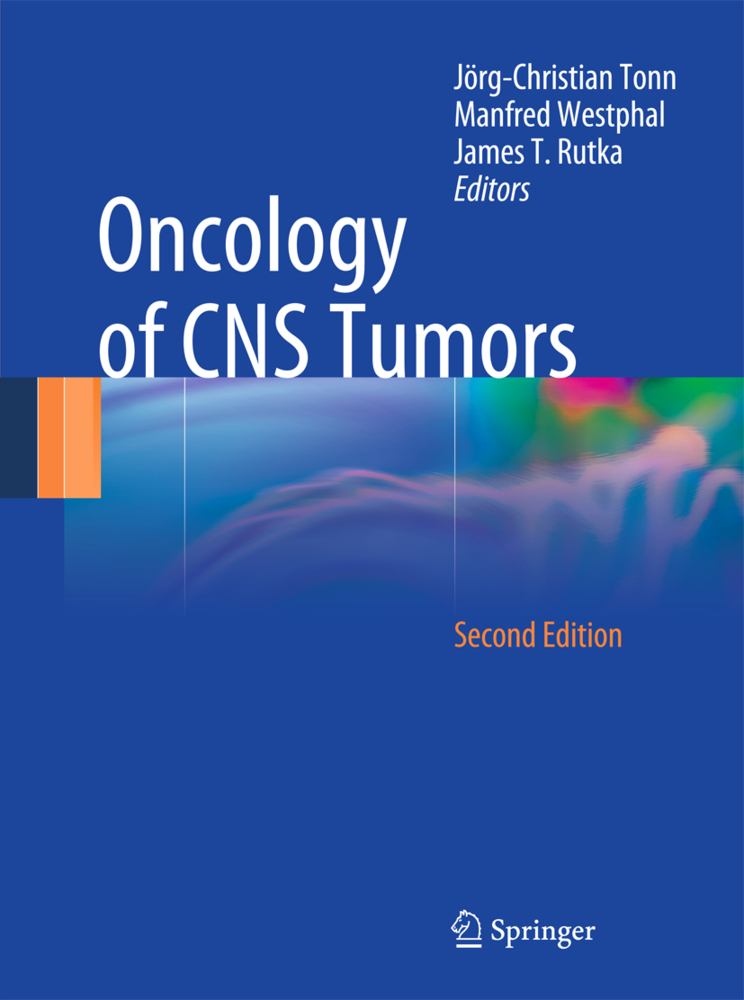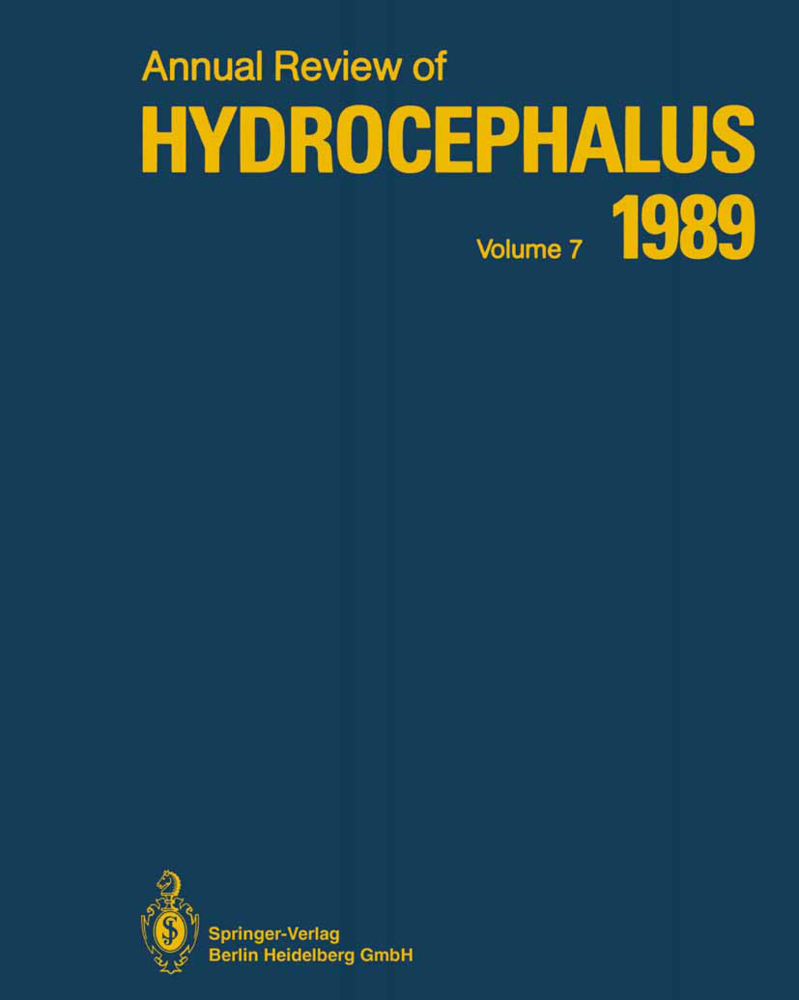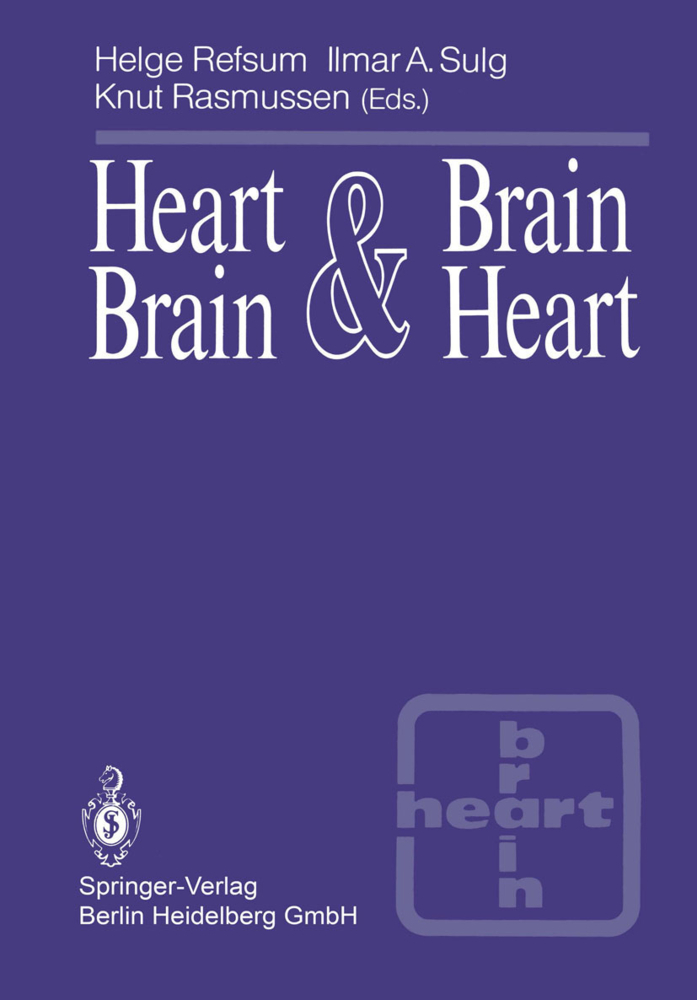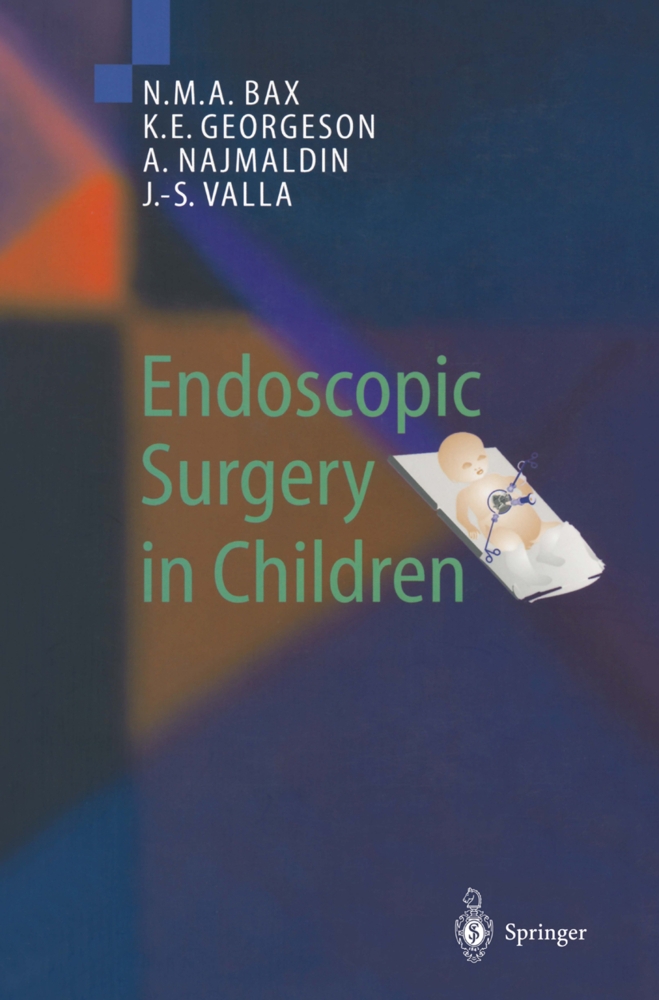Intracerebral Hemorrhage Hydrocephalus malresorptivus Peripheral Nerves
Intracerebral Hemorrhage Hydrocephalus malresorptivus Peripheral Nerves
Advances in Neurosurgery presents the experience and research results of modern neurosurgeons confronted with urgent diagnostic and therapeutic problems. The first topic here is spontaneous intracerebral hematomas, whose localization determines the form of treatment and usually its outcome. Newer therapeutic approaches such as stereotactic removal, endoscopy and fibrinolysis supplement the results of standard operative methods. Secondly, the hydrocephalus malresorptivus is covered, presenting experience with the diagnostic value of intrathecal infusion tests, CT-cisternography, evoked potentials, and MRI CSF-flow studies, as well as aspects of neurosurgical intensive care such as barbiturate treatment, respiratory problems in head injury patients, auto-regulation mechanisms, and hospital infection. The last section is devoted to peripheral nerve surgery, reports on experience with microsurgery and various forms of anastomosis in both traumatic and tumorous nerve lesions.
Prognostic Factors and Surgical Indications in Spontaneous Lobar and Putaminal Hematomas
Assessment of Prognosis and Indication for Surgery on the Basis of Cluster Analysis in Intracerebral Hematomas
Intracerebral Hemorrhage. A Clinical Presentation of Durai Arteriovenous Fistulas of the Anterior Cranial Fossa: Diagnosis and Microneurosurgical Treatment
Monitoring of Jugular Venous Oxygen Saturation in Patients with Intracerebral Hematomas
Lysis of Intraventricular and Intracerebral Hematomas with Tissue Plasminogen Activator
Prognostic Value of Initial Median Nerve Somatosensory and Brain Stem Auditory Evoked Potentials in Patients with Spontaneous Intracerebral Hemorrhage
Computed Tomographic-Stereotactic Evacuation and Fibrinolysis of Spontaneous Intracerebral Hematomas
Spontaneous Intercerebral Hermorrhages in Childhood
Therapy and Prognosis in Spontaneous Cerebellar Hematomas
Spontaneous Cerebellar Hermorrhage: Acute Management and Prognosis
Cerebellar Hematomas: Prognosis and Risk of Upward Transtentorial Herniation
Posterior Fossa Haematomas Secondary to Occult Angiomatous Malformation (Cavernomas)
Brainstem Hematomas Caused by Vascular Malformations: Results of Microsurgical Therapy
Spontaneous Intracerebral Hematomas: Considerations in Atypical Presentations
Morbidity and Mortality of Patients with Spontaneous Intracerebral Hematomas
Stereotactic Evacuation and Local Fibrinolysis of Spontaneous Intracerebral Hematomas
Hydrocephalus malresorptivus
The Solved and Unsolved Problems of Hydrocephalus Valves: A Critical Comment
External Ventricular Drainage for Treatment of Acute Hydrocephalus After Subarachnoid Hemorrhage
Complications and Clinical Course After Shuting of Normal Pressure Hydrocephalus
Intrathecal Infusion Test: An Investigative Method to Treat Malresorptive Hydrocephalus by Shunt Operation
Long-Term Follow-up and Computed Tomography Cisternography in the Evaluation of Normal-Pressure Hydrocephalus
Narrow Sulci at the Medial Brain Surface: A Feature of Normal-Pressure Hydrocephalus in Computerized Tomography?
Aqueductal Cerebrospinal Fluid Flow Phenomena on Magnetic Resonance Imaging: Comparision with Intracranial Pressure and Cerebrospinal Fluid Dynamics
Clinical Experience with a New Flow-Regulating Hydrocephalus Shunt System
Management of Hydrocephalus in Craniosynostosis
Intensive Care
Effect of Head Elevation on Intracranial Pressure, Cerebral Perfusion Pressure, and Cerebrovenous Oxygen Saturation
Interhemispheric Gradients in Head-Injured Patients: Their Evidence in Epidural Intracranial Pressure Measurement
Improved Outcome from Traumatic Coma Using Only Ventricular Cerebrospinal Fluid Drainage for Intracranial Pressure Control
Barbiturate Coma in Patients with Severe Head Injuries: Long-Term Outcome in 79 Patients
Pre-hospital Airway Care and Control of Ventilation in Patients with Head Injuries: A Retrospective Analysis in 1623 Head Trauma
Influence of Volume- and Pressure-Controlled Ventilation on the Intracranial Pressure with Continuous Propofol Sedation in Neurosurgical Patients
The Influence of Nosocomial Pneumonia on Outcome of Severely Head-Injured Patients
Peripheral Nerves
Treatment of Peripheral Nerve Lesions
What Is Special About Traumatic Brachial Plexus Lesions?
Findings and Results of 80 Surgical Revisions for Carpal Tunnel Syndrome
Radial Nerve Lesions Associated with Fractures of the Humerus or Radius: Results of Surgical Treatment
Treatment Results of Anterior Submuscular Transposition and Medial Epicondylectomy for Ulnar Nerve Entrapment at the Elbow
Ulnar Nerve Lesion During Lumbar Disc Operation
Traumatic Lesions of the Lumbosacral Plexus: Microsurgical Treatment
Autologous Transplantation in Injury of Cauda Fibers: Results of a Reconstruction of Transected L5 Filaments in a Luxation Fracture L4/5
Factors To Be Considered in Nerve Anastomosis with Fibrin Adhesive
Alternatives to Autologous Nerve Grafting
Motor Unit Reorganization After End-to-End-Repair of an Experimentally Injured Peripheral Nerve
Differential Localization of the Nerve Growth Factor Receptor in Tumors of the Peripheral Nervous System
The Ansa Cervicalis Hypoglossal-Facial Anastomosis for Indirect Facial Nerve Reconstruction
Lesions of the Accessory Nerve in Its Extracranial Course
Results of Surgical Treatment of Meralgia Paresthetica
Serum Neuron-Specific Enolase in Ischemic Brain Damage
Preliminary Experience with Three-Dimensional Magnetic Resonance Angiography in the Identification of Intracranial Aneurysms
Transarticular C1-C2 Screw Fixation Combined with Fusion of the Craniocervieal Junction in Arthritic Patients
Strategy of Endovascular Treatment of Mixed Plexiform and Fistulous Intracranial Ateriovenous Malformations
Proliferation Rate in Meningiomas: Validity of Ki-67 and Proliferation-Associated Nuclear Antigen Labeling Indices
Winning Poster and Lecture Presentations
Effect of the 21-Aminosteroid U-74389F on Brain Edema Following a Cryogenic Lesion in Rats
Juxtamedullary Tumors of the Ventral Thoracic or Upper Lumbar Spine: A Posterolateral, Extracavital Operative Approach
Activity of Ornithine Decarboxylase and Ki-67 Index in Meningiomas
Comparative Study of Monocyte-Mediated Cytotoxicity and Biological Response Modifier-Mediated Cytotoxicity Against Malignant Human Brain Tumor Cells In Vitro.
Intracerebrai Hemorrhage
Spontaneous Intracerebral Hematomas: Clinical Appraisal of Surgical and Conservative TreatmentPrognostic Factors and Surgical Indications in Spontaneous Lobar and Putaminal Hematomas
Assessment of Prognosis and Indication for Surgery on the Basis of Cluster Analysis in Intracerebral Hematomas
Intracerebral Hemorrhage. A Clinical Presentation of Durai Arteriovenous Fistulas of the Anterior Cranial Fossa: Diagnosis and Microneurosurgical Treatment
Monitoring of Jugular Venous Oxygen Saturation in Patients with Intracerebral Hematomas
Lysis of Intraventricular and Intracerebral Hematomas with Tissue Plasminogen Activator
Prognostic Value of Initial Median Nerve Somatosensory and Brain Stem Auditory Evoked Potentials in Patients with Spontaneous Intracerebral Hemorrhage
Computed Tomographic-Stereotactic Evacuation and Fibrinolysis of Spontaneous Intracerebral Hematomas
Spontaneous Intercerebral Hermorrhages in Childhood
Therapy and Prognosis in Spontaneous Cerebellar Hematomas
Spontaneous Cerebellar Hermorrhage: Acute Management and Prognosis
Cerebellar Hematomas: Prognosis and Risk of Upward Transtentorial Herniation
Posterior Fossa Haematomas Secondary to Occult Angiomatous Malformation (Cavernomas)
Brainstem Hematomas Caused by Vascular Malformations: Results of Microsurgical Therapy
Spontaneous Intracerebral Hematomas: Considerations in Atypical Presentations
Morbidity and Mortality of Patients with Spontaneous Intracerebral Hematomas
Stereotactic Evacuation and Local Fibrinolysis of Spontaneous Intracerebral Hematomas
Hydrocephalus malresorptivus
The Solved and Unsolved Problems of Hydrocephalus Valves: A Critical Comment
External Ventricular Drainage for Treatment of Acute Hydrocephalus After Subarachnoid Hemorrhage
Complications and Clinical Course After Shuting of Normal Pressure Hydrocephalus
Intrathecal Infusion Test: An Investigative Method to Treat Malresorptive Hydrocephalus by Shunt Operation
Long-Term Follow-up and Computed Tomography Cisternography in the Evaluation of Normal-Pressure Hydrocephalus
Narrow Sulci at the Medial Brain Surface: A Feature of Normal-Pressure Hydrocephalus in Computerized Tomography?
Aqueductal Cerebrospinal Fluid Flow Phenomena on Magnetic Resonance Imaging: Comparision with Intracranial Pressure and Cerebrospinal Fluid Dynamics
Clinical Experience with a New Flow-Regulating Hydrocephalus Shunt System
Management of Hydrocephalus in Craniosynostosis
Intensive Care
Effect of Head Elevation on Intracranial Pressure, Cerebral Perfusion Pressure, and Cerebrovenous Oxygen Saturation
Interhemispheric Gradients in Head-Injured Patients: Their Evidence in Epidural Intracranial Pressure Measurement
Improved Outcome from Traumatic Coma Using Only Ventricular Cerebrospinal Fluid Drainage for Intracranial Pressure Control
Barbiturate Coma in Patients with Severe Head Injuries: Long-Term Outcome in 79 Patients
Pre-hospital Airway Care and Control of Ventilation in Patients with Head Injuries: A Retrospective Analysis in 1623 Head Trauma
Influence of Volume- and Pressure-Controlled Ventilation on the Intracranial Pressure with Continuous Propofol Sedation in Neurosurgical Patients
The Influence of Nosocomial Pneumonia on Outcome of Severely Head-Injured Patients
Peripheral Nerves
Treatment of Peripheral Nerve Lesions
What Is Special About Traumatic Brachial Plexus Lesions?
Findings and Results of 80 Surgical Revisions for Carpal Tunnel Syndrome
Radial Nerve Lesions Associated with Fractures of the Humerus or Radius: Results of Surgical Treatment
Treatment Results of Anterior Submuscular Transposition and Medial Epicondylectomy for Ulnar Nerve Entrapment at the Elbow
Ulnar Nerve Lesion During Lumbar Disc Operation
Traumatic Lesions of the Lumbosacral Plexus: Microsurgical Treatment
Autologous Transplantation in Injury of Cauda Fibers: Results of a Reconstruction of Transected L5 Filaments in a Luxation Fracture L4/5
Factors To Be Considered in Nerve Anastomosis with Fibrin Adhesive
Alternatives to Autologous Nerve Grafting
Motor Unit Reorganization After End-to-End-Repair of an Experimentally Injured Peripheral Nerve
Differential Localization of the Nerve Growth Factor Receptor in Tumors of the Peripheral Nervous System
The Ansa Cervicalis Hypoglossal-Facial Anastomosis for Indirect Facial Nerve Reconstruction
Lesions of the Accessory Nerve in Its Extracranial Course
Results of Surgical Treatment of Meralgia Paresthetica
Serum Neuron-Specific Enolase in Ischemic Brain Damage
Preliminary Experience with Three-Dimensional Magnetic Resonance Angiography in the Identification of Intracranial Aneurysms
Transarticular C1-C2 Screw Fixation Combined with Fusion of the Craniocervieal Junction in Arthritic Patients
Strategy of Endovascular Treatment of Mixed Plexiform and Fistulous Intracranial Ateriovenous Malformations
Proliferation Rate in Meningiomas: Validity of Ki-67 and Proliferation-Associated Nuclear Antigen Labeling Indices
Winning Poster and Lecture Presentations
Effect of the 21-Aminosteroid U-74389F on Brain Edema Following a Cryogenic Lesion in Rats
Juxtamedullary Tumors of the Ventral Thoracic or Upper Lumbar Spine: A Posterolateral, Extracavital Operative Approach
Activity of Ornithine Decarboxylase and Ki-67 Index in Meningiomas
Comparative Study of Monocyte-Mediated Cytotoxicity and Biological Response Modifier-Mediated Cytotoxicity Against Malignant Human Brain Tumor Cells In Vitro.
Lorenz, Rüdiger
Klinger, Margareta
Brock, Mario
| ISBN | 978-3-540-56304-4 |
|---|---|
| Artikelnummer | 9783540563044 |
| Medientyp | Buch |
| Copyrightjahr | 1993 |
| Verlag | Springer, Berlin |
| Umfang | XIII, 328 Seiten |
| Abbildungen | XIII, 328 p. 67 illus. |
| Sprache | Englisch |

